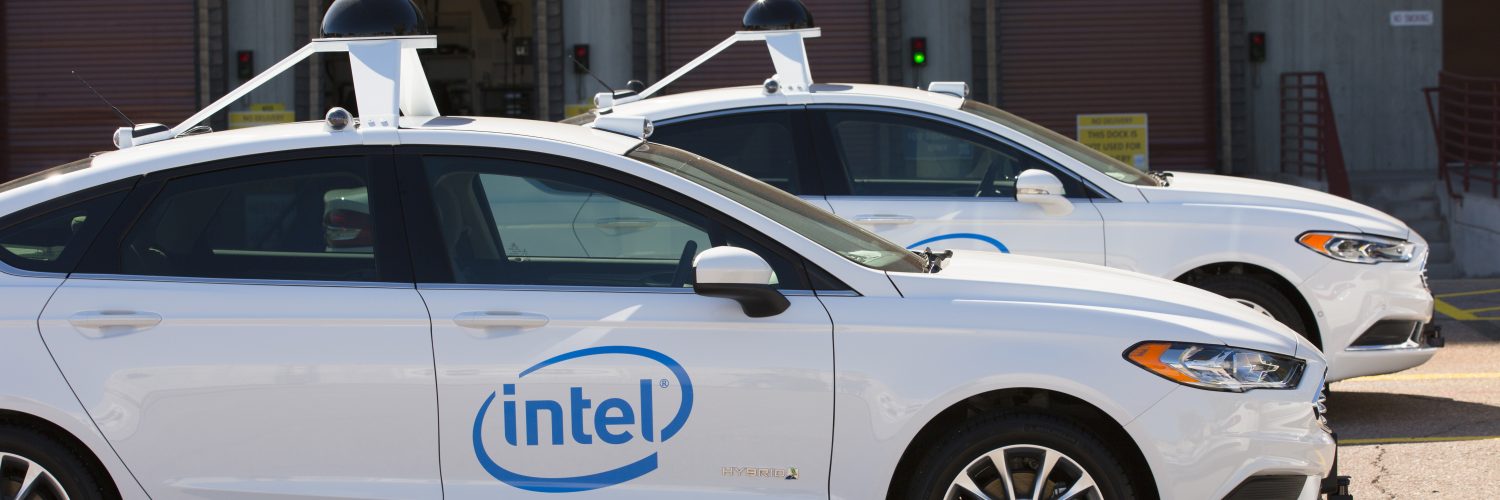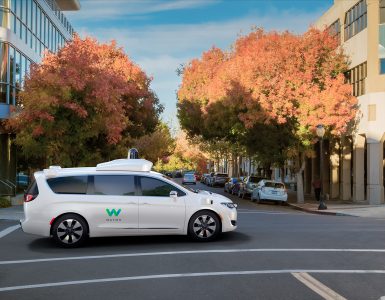Intel is at the forefront of an autonomous vehicle evolution, and Arizona is the testing ground.
In 2018, Intel became the first private-sector partner of the new Institute of Automated Mobility (IAM), a consortium of companies, public officials and university researchers created by Gov. Doug Ducey to enhance state-of-the-art autonomous vehicle research and testing in Arizona.
“The Institute for Automated Mobility will bring together global industry leaders, a public sector team and the brightest minds in academia, focused on advancing all aspects of automated vehicle science, safety and policy,” Ducey said. “Arizona is committed to providing the leadership and knowledge necessary to integrate these technologies into the world’s transportation systems.”
U.S. companies are expected to spend $61 billion in research and development and capital investments on autonomous vehicle technology by 2023, and the federal government has planned $100 million in funding for autonomous vehicle research and development, according to the U.S. Department of Transportation.
Intel coined the phrase “passenger economy” in 2017 to describe a near future in which people depend on autonomous vehicles for transportation, predicting the technology will “free more than 250 million hours of commuting time per year in the world’s most congested cities.”
“Intel predicts a total addressable market of $200 billion from rising consumer use of new in-vehicle applications and content,” said Jill Sciarappo, senior strategic marketing director of autonomous driving at Intel.
Intel recently previewed what that industry could look like in a presentation at the 2019 Consumer Electronics Show in Las Vegas, demonstrating how screens, lights and audio systems within autonomous cars can create an immersive entertainment experience for passengers.
According to Intel, one of the biggest benefits of autonomous vehicles is safety on the road. The National Highway Traffic Safety Administration estimates traffic crashes in the U.S. claim more than 37,000 lives and cost more than $252 billion per year.
“Safety is our North Star, and it’s also one of the biggest roadblocks to AV adoption,” Sciarappo said. “In the United States, if only 10 percent of vehicles were self-driving, traffic deaths could decrease by 1,100, saving almost $38 billion per year.”
Intel first began its Arizona operations in 1980, and the company has remained “thoughtful partners” with the city of Chandler and the state ever since, Sciarappo said. Intel has an autonomous vehicle lab in Chandler where researchers collect data for mapping and machine learning.
“The ecosystem of innovation here in the East Valley has contributed to our success and expansion over the years,” Sciarappo said. “As part of our growth strategy, Intel is focused on technology that impacts society such as automated driving — a market opportunity expected to be worth up to $70 billion by 2030, but more importantly, save countless lives.”
The IAM plays a critical role in the company’s quest for autonomous vehicle safety by allowing developers to test autonomous driving technology in real-world settings.
“The Arizona Institute for Automated Mobility was established with the primary mission of exploring and delivering AV safety,” Sciarappo said. “IAM will use Intel’s Responsibility-Sensitive Safety (RSS) model as the foundation for its research and testing of AV safety. And RSS is gaining traction globally.”
In order for the automotive industry to sell autonomous vehicles to consumers, companies must build trust with governments in order to get the certification necessary to operate on public roads. The IAM gives Intel and other autonomous vehicle developers an opportunity to put their technology to the test and show consumers and governments alike the benefits it could provide.
“Our operations here in Arizona are a critical part of our global technology development and manufacturing network, and we’re committed to the community here,” Sciarappo said.
(Photo Credit: Tim Herman/Intel Corporation)
















Add comment